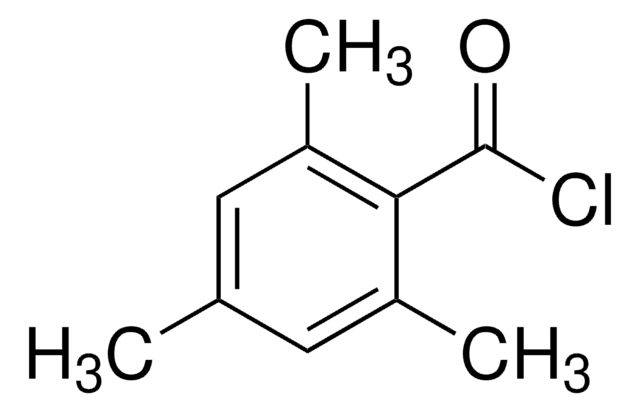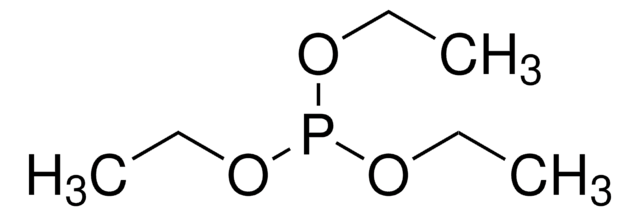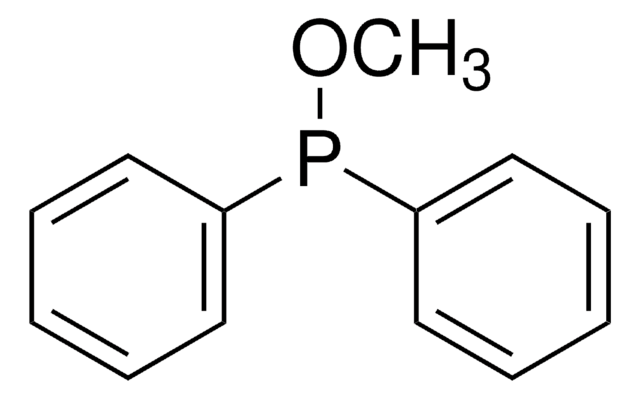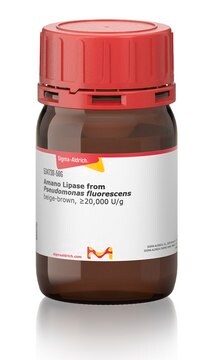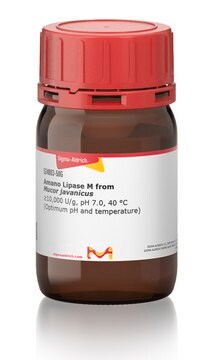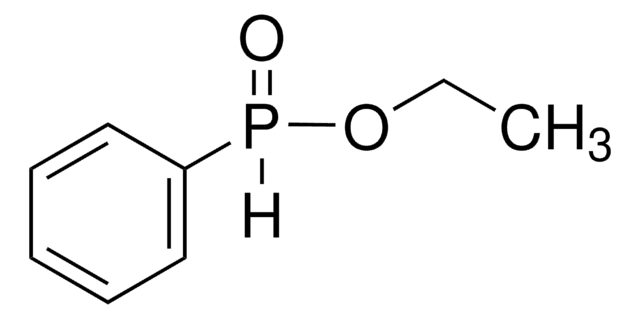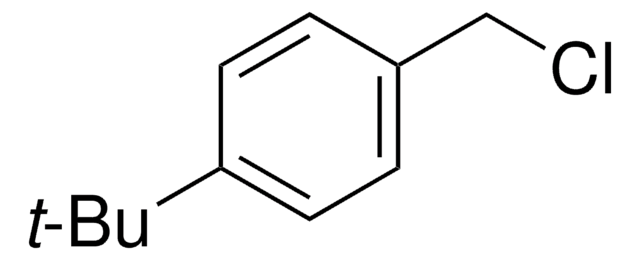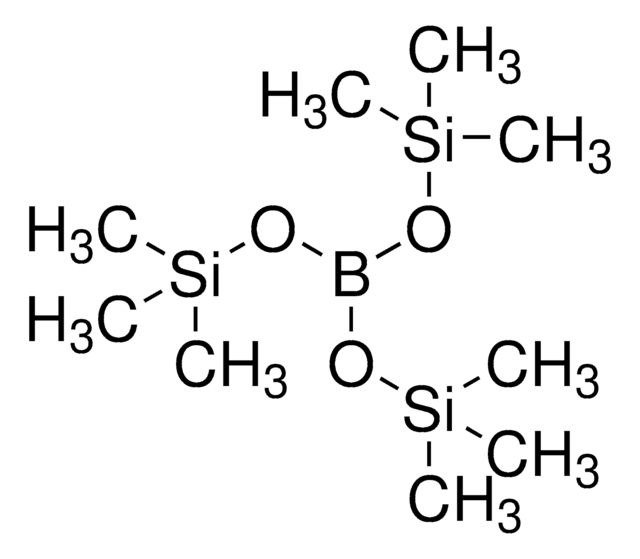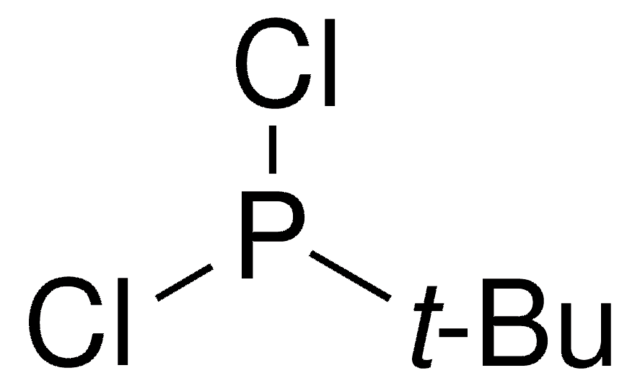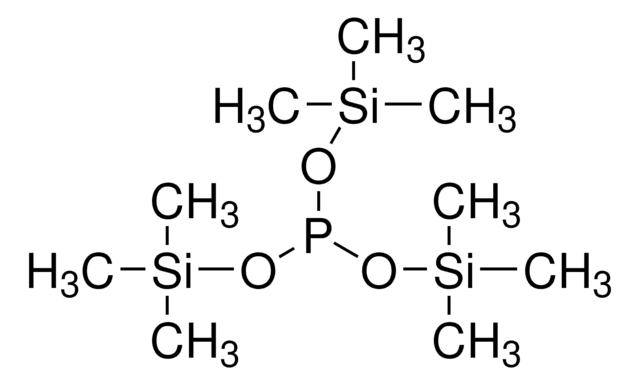149470
Dimethyl phenylphosphonite
97%
Sinonimo/i:
Phenyldimethoxyphosphine, Dimethoxyphenylphosphine
About This Item
Prodotti consigliati
Saggio
97%
Forma fisica
liquid
Impiego in reazioni chimiche
reaction type: Buchwald-Hartwig Cross Coupling Reaction
reaction type: Heck Reaction
reaction type: Hiyama Coupling
reaction type: Negishi Coupling
reaction type: Sonogashira Coupling
reaction type: Stille Coupling
reaction type: Suzuki-Miyaura Coupling
Indice di rifrazione
n20/D 1.529 (lit.)
Densità
1.072 g/mL at 25 °C (lit.)
Temperatura di conservazione
2-8°C
Stringa SMILE
COP(OC)c1ccccc1
InChI
1S/C8H11O2P/c1-9-11(10-2)8-6-4-3-5-7-8/h3-7H,1-2H3
LMZLQYYLELWCCW-UHFFFAOYSA-N
Avvertenze
Danger
Indicazioni di pericolo
Classi di pericolo
Eye Dam. 1 - Skin Corr. 1B
Codice della classe di stoccaggio
8A - Combustible corrosive hazardous materials
Classe di pericolosità dell'acqua (WGK)
WGK 3
Punto d’infiammabilità (°F)
235.4 °F - closed cup
Punto d’infiammabilità (°C)
113 °C - closed cup
Dispositivi di protezione individuale
Faceshields, Gloves, Goggles, type ABEK (EN14387) respirator filter
Certificati d'analisi (COA)
Cerca il Certificati d'analisi (COA) digitando il numero di lotto/batch corrispondente. I numeri di lotto o di batch sono stampati sull'etichetta dei prodotti dopo la parola ‘Lotto’ o ‘Batch’.
Possiedi già questo prodotto?
I documenti relativi ai prodotti acquistati recentemente sono disponibili nell’Archivio dei documenti.
I clienti hanno visto anche
Il team dei nostri ricercatori vanta grande esperienza in tutte le aree della ricerca quali Life Science, scienza dei materiali, sintesi chimica, cromatografia, discipline analitiche, ecc..
Contatta l'Assistenza Tecnica.